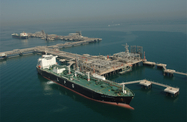
– Moves to create a Pan-Arab Electricity Market were accelerated in response to the pandemic
– The initiative aims to increase electricity trading from 2% to 40% by 2035
– Greater integration offers significant opportunities for renewables and private investment
– The PAEM could be a critical component of countries’ recoveries from Covid-19

The coronavirus pandemic has given rise to a global uptick in regional cooperation and interconnectedness as a means to economic recovery. Forming part of this trend, countries in the Arab world have recently moved to expand cooperation with regard to electricity supplies.
In mid-2020, shortly after the initial outbreak of Covid-19, the Arab Ministerial Council for Electricity (AMCE), a body connected to the League of Arab States (LAS), made significant progress in plans to establish a Pan-Arab Electricity Market (PAEM).
During the talks, the council approved the ratification process of the PAEM legal and market agreements, which has cleared the path for Arab countries to sign binding electricity-sharing agreements this year.
The PAEM aims to revolutionise the electricity sector in the Middle East, with plans to increase cross-border electricity trade from the current level of 2% to around 40% by 2035.
While the Covid-19 pandemic accelerated progress, plans for a PAEM have been in the offing since 2017, when a memorandum of understanding was signed by 16 states, namely Algeria, Bahrain, Egypt, Iraq, Jordan, Kuwait, Libya, Morocco, Oman, Palestine, Qatar, Saudi Arabia, Sudan, the Union of the Comoros, the UAE and Yemen.
A major milestone came in November 2019, with the first Pan-Arab Energy Trade Conference, held in Cairo and convened by the LAS, the World Bank Group and the Arab Fund for Economic and Social Development.
Led by energy ministers, delegations from Arab states discussed the best approach to deepening and extending regional cooperation in terms of energy supply. A declaration made at the end of the conference outlined plans for a first transitional stage, to run from 2019 to 2024.
During this period, a PAEM secretariat is to be established and a design for a regional market structure adumbrated. A pilot pricing mechanism for commercial cross-border electricity trade is also scheduled to be launched.
The benefits of increased integration
Even prior to Covid-19, there was a strong economic case for boosting the integration of regional commercial trade in electricity.
As well as expanding the efficiency and transparency of the market, many felt that the PAEM would serve to increase broader market integration and drive sustainable development.
Increased integration of energy systems can unlock various economies of scale and cost savings for individual market participants. This can help governments reduce subsidies and increase private sector participation in the utilities industry.
For example, in 2019 the World Bank estimated that the potential shared value of electricity trade in the region between 2020 and 2030 was $12bn. However, the bank noted that overall savings could reach as high as $44bn if more optimal power systems were introduced and expensive liquid fuels were replaced by other more cost-effective sources for power generation.
Furthermore, individual networks within an integrated system become more reliable, buttressed by a more efficient use of capacity reserves and guaranteed supply.
It will also be an opportunity for net producers of energy to sell their excess to their neighbours. This is key in regions – such as the broader Arab world – in which energy resources are imbalanced. Furthermore, it is hoped that the PAEM will eventually allow members to expand exports to the European and Asian markets.
On an environmental note, the more integrated a grid is, the more renewable energy it will be able to use. The PAEM thus aligns with local, regional and global renewable energy goals.
Integration to drive recovery
Covid-19 brought the potential advantages of the PAEM into even sharper focus.
Global supply chain disruptions and volatile oil prices were just two of the factors that highlighted the importance of boosting regional integration.
Meanwhile, reliable electricity is essential to the industrial and economic recovery from Covid-19. Rapid population growth means that there will be a consistently increasing demand across the region.
Furthermore, the PAEM also dovetails with many MENA countries’ plans for a so-called green recovery.
Among the clean energy leaders in the region is Morocco, which generated around 35% of its electricity needs from renewables before the pandemic thanks to a series of large-scale solar projects.
Morocco aims to increase this share to 50% by 2030 and hopes to become 100% powered by renewables by 2050.
The region still has a lot of unexploited potential in terms of renewables, and having access to a broader market for renewable energy will drive the growth of this key sector.
A prime example of a country looking to expand in this area is Saudi Arabia, which has set out ambitious renewable energy goals in light of the pandemic.
While renewables accounted for just 0.05% of the country’s electricity production in 2018, in January the government outlined a revised target of 50% by 2030, to be achieved through the mass rollout of new projects.
In another bonus, the PAEM will give member countries a chance to draw on some of the cross-border electrical interconnection infrastructure financed by the Arab Fund over the last decades, as well as the interconnections set up by GCC countries.
Potentially, the total size of the PAEM could be nearly 300 GW, which would make it second in the world only to the European Network of Transmission System Operators.
Of course, fully realising this goal would require a great deal of commitment and investment. While several major steps still need to be taken before the PAEM gets off the ground, the experiences of the past year, combined with an awareness of the challenges ahead, will likely have the effect of both strengthening political will and ensuring that the process is fast-tracked.



